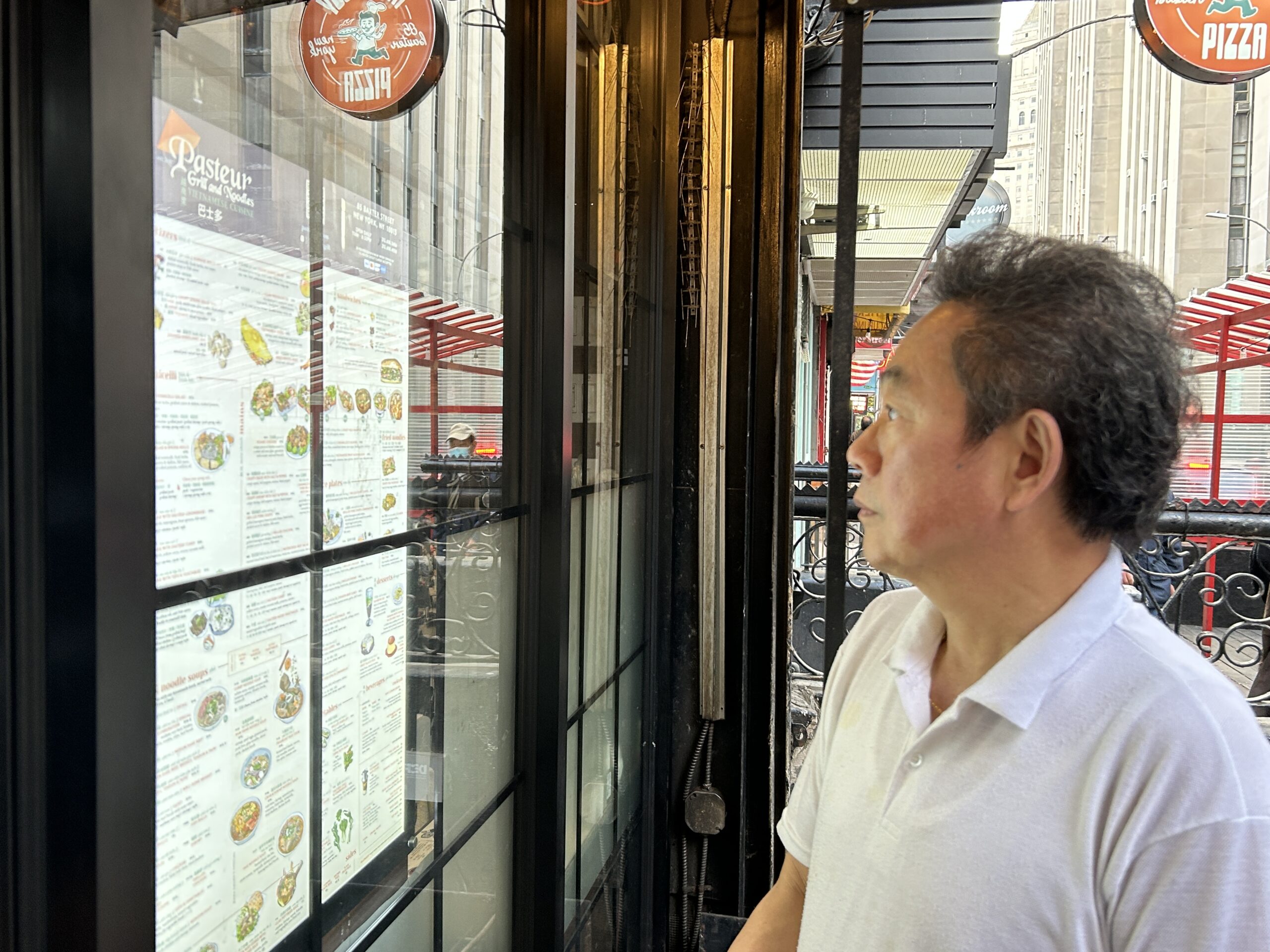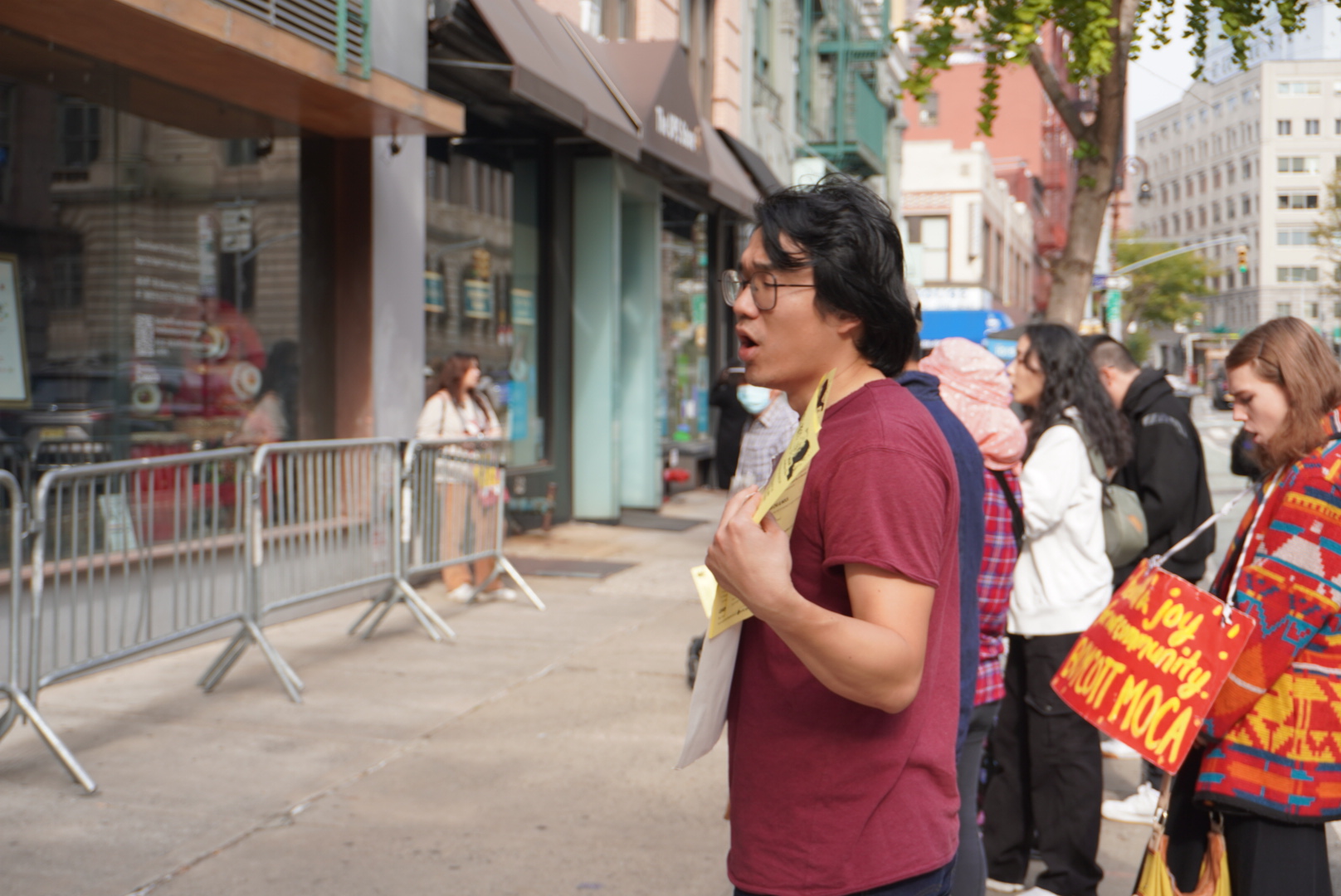At 6 p.m., Monday to Friday, 10 hours of construction noise on Baxter Street finally stops. Across the street from the drilling and bulldozing is Pasteur Grill and Noodles, Chinatown’s oldest Vietnamese restaurant, where the owner, Dennis Chung braces for the dinner crowd. It’s his restaurant’s only spike in traffic for the day.
“Because of the construction, there aren’t many customers at lunchtime,” Chung said in Cantonese.
The construction he refers to is the demolition of the Manhattan Detention Complex, a pre-trial jail for men known as “The Tombs.” Its dismantlement is part of the city’s plan to rebuild a larger detention center in its place, which will become one of four new borough-based jails scheduled to open across the city. The additional locations will replace Rikers Island, the notorious jail that the New York City Council voted to close in 2019. But with this larger jail set to be completed in 2027, Chinatown residents, who are already affected by the construction, are also conflicted about the impact that the larger jail will have on their neighborhood.
The new complex to replace The Tombs, a building that is expected to be the tallest jail in the world at 300 feet, has prompted a number of protests from Chinatown activists and some city officials.
“There’s no way out,” Chung said. “My business is probably going to be like this for the next seven to 10 years.”

Dennis Chung looks at his restaurant’s menu. (Credit: Zirui Yang)
Chung remembers when his restaurant opened in Chinatown in 1990, there was only one other dining place nearby. People who worked in businesses in the area, including The Tombs, were regulars.
“Many of my customers are staff members and visitors of the jail,” he said.
The Tombs reportedly got its name because the shape of the original jail from 1838 resembled an ancient Egyptian tomb, according to the New-York Historical Society.
The current jail, built in 1942, has raised controversy in the past. When Chung started his business, the jail had been renovated and reopened with a North and South Tower, after it was sued by the New York City Legal Aid Society for poor conditions. The building was designed for 925 inmates but had been housing more than 2,000, according to NYC Urbanism, a website that records the city’s architectural history.
The new two-tower building was named the Manhattan Detention Complex, bounded by Centre, Baxter, Walker and White streets.
Over the years, Baxter Street became livelier and more than 10 restaurants opened near The Tombs, said Chung.
But the thriving scene ended in 2020 when the pandemic hit, closing down businesses. And when Baxter Street reopened, the City Council decided to close the Manhattan Detention Center, a key customer base for Chung.
Chung said his restaurant hasn’t bounced back since reopening in late 2020. But it’s not because of a lingering pandemic effect, but construction around the jail.
“Customers have to come around from further away, which is a hassle,” he said, adding that his income is 20% less than it was before 2020.
“The noise is loud and lasts all day,” he said. “The dust makes no customer want to sit outside.”

Dismantling of “The Tombs” has begun. (Credit: Zirui Yang)
Half of the restaurants and stores around Baxter Street are now empty, but Chung says he doesn’t plan to move.
“I’m too old and relocation is a lot of money,” he said. “I can still hold out.”
Chung said the city did not discuss the construction with surrounding businesses and that he’s received no compensation from the government for the inconvenience.
Andy Ha, the owner of Nha Trang One, a Vietnamese noodle store on Baxter Street that opened in 1992, said his lunchtime traffic has been affected by the construction too, but that he can’t move because of his lease. “I am giving myself a five-year plan,” he said. “If my turnover stays low in the meantime, I’ll move.”
In Columbus Park, a block away from the construction field, Chinatown resident Tan Xiaomei has to wait until the construction noise ends before she can start karaoke with her retired friends.
Tan and her friends said they don’t want a new prison to be built in their neighborhood.
“The Chinese people are less inclined to fight it, thinking it’s a government decision we can’t do much about,” she said in Mandarin. “But who would want a bunch of criminals living in the tallest building in your neighborhood?”
However, there are still small protests by a number of organizations. Construction on this jail has also fallen behind the 2027 date that city officials had planned.
Gary He is a member of Youth Against Displacement, a group that opposes the city’s plans for rezoning in Chinatown.
He and his friends have been protesting against the jail construction for two years.

Gary He and other activists protest against the new jail. (Credit: Zirui Yang)
“Chinatown residents don’t want this new jail,” he said. ”But the government has never taken our views into account, and this jail indicates how easily they can be biased and put whatever they want into the community.”
A petition initiated by Welcome to Chinatown, a community organization that opposes the jail, received 12,178 signatures.
Christopher Marte, a city councilmember who represents the district where the jail is scheduled to open, is opposed to the expansion project. “The fight isn’t over,” Marte said, adding that he doesn’t think the city has the funding to complete the project.
“Instead of building the mega-jail, I will try to get the government to keep the South Tower and remodel it,” said Marte.
Requests for comment from the Department of Design and Construction weren’t returned, but its website issued a statement about the city’s plans for new jails. “The borough-based system will strengthen connections to families, attorneys, courts, medical and mental health care, and faith and community-based organizations ,” the site notes.
But He disagrees. “If they really want to help Chinatown, the government should spend the money on something more useful instead of building a new jail,” he said.
About the author(s)
Zirui Yang, who is from mainland China and had his undergraduate study in Hong Kong, is now a reporting fellow at the Toni Stabile Center for Investigative Journalism.



